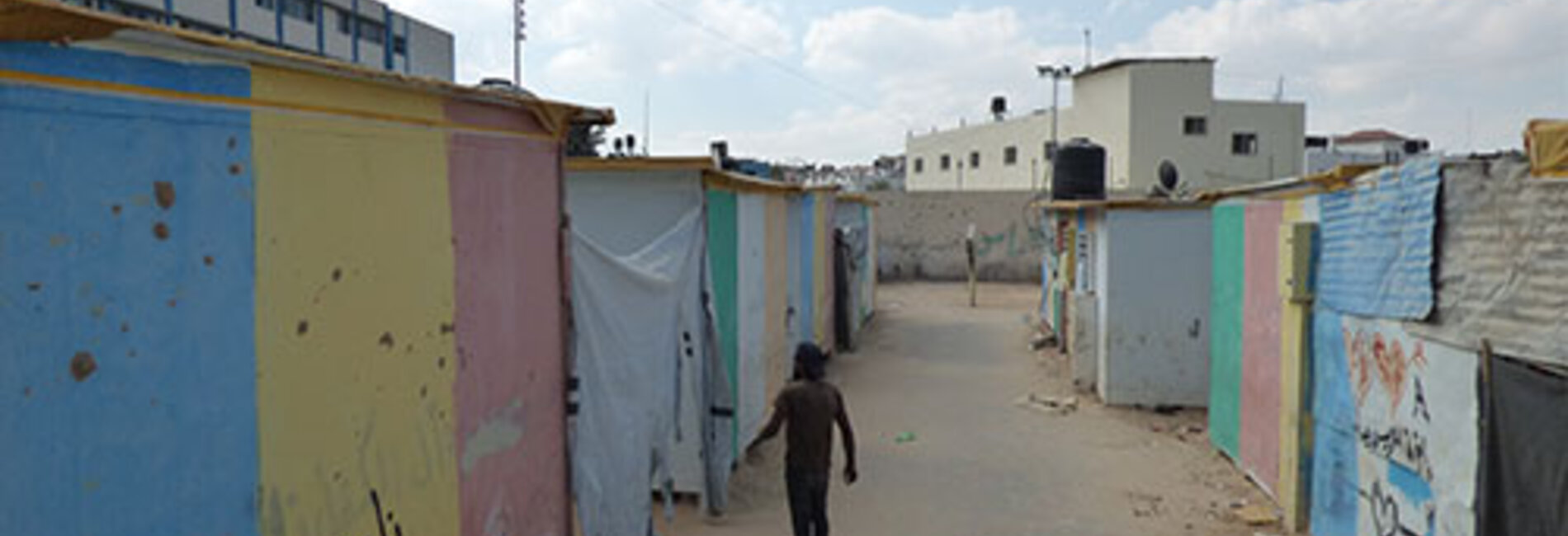Monthly Overview: October 2016
On 19 October, the UN Special Coordinator for the Middle East Process, Nicolay Mladenov, briefed the Security Council on the serious challenges facing reconstruction efforts in Gaza following the 2014 hostilities: “Last week, I travelled to Gaza where I witnessed warehouses empty of construction materials… due to limitations of imports. No new residential reconstruction projects have been approved since March. In recent days the approval for some 80 projects – some of which had already been started - has been revoked by Israel. I saw residential buildings half-built. I met with families whose projects have been cleared for reconstruction, yet have not received any cement for months. I heard from those that have tried to navigate the web of rules governing the import of materials considered ‘dual-use’ with no luck or response.”
More than two years after the ceasefire, some 60,000 internally displaced persons (IDPs) are still waiting for a durable housing solution. A minority continues to live in vulnerable and unsuitable conditions. This Humanitarian Bulletin highlights the situation of approximately 4,500 IDPs living in temporary displacement sites in caravans, most of which have become dilapidated. They are exposed to weather extremes, of particular concern in the approach of winter, and also to safety risks and poor access to basic services. A coordinated response plan to address the needs of the most vulnerable caravan dwellers is under preparation.
Special Coordinator Mladenov also warned the Security Council of “the widening chasm that has emerged between both parts of the occupied Palestinian territory, [which] undermines the national state-building enterprise and threatens the very viability of establishing a unified Palestinian state as part of a two-state solution.”
This Humanitarian Bulletin focuses on the pervasive impact of this internal divide on the provision of municipal services across the Gaza Strip, including public hygiene, infrastructure and the environment. The combination of the divide with the blockade and restrictions on international funding to the Gaza authorities, has led to a steady decline in municipal revenues and a rise in debt. Municipal staff and Ministry of Local Government employees have not been paid a full salary on a regular basis for over two years. To illustrate just one outcome of the crisis, thousands of households are not connected to the sewage network and are forced to rely on unsafe in-house cesspits.
Displacement and the risk of forcible transfer remains a serious concern in the West Bank. In September and October the Israeli authorities demolished or confiscated 155 Palestinian-owned structures in Area C and East Jerusalem on the grounds that they lacked an Israeli-issued building permit; these are almost impossible to obtain. Some 240 people, half of them children, were displaced and more than 350 people were otherwise affected. The number of demolitions since the beginning of 2016 is the highest since OCHA began formal records of demolitions in 2009. The case of Tell el Himma, a herding community in the northern Jordan Valley, illustrates the hardship of families confronting the loss of their homes and livelihoods.
According to an Israeli media report, the Israeli Security Cabinet has approved a plan to allow the construction of facilities in Area C to serve the Palestinian population in the northern West Bank, the first such permission in years. If confirmed and implemented, this would constitute a positive step forward. Pending this or similar steps, the Under-Secretary General for Humanitarian Affairs Stephen O’Brien declared in this latest briefing to the Security Council that Area C demolitions “must cease immediately” and Israel must “revoke policies and halt practices that may lead to the forcible transfer of Bedouin and herding communities.”










